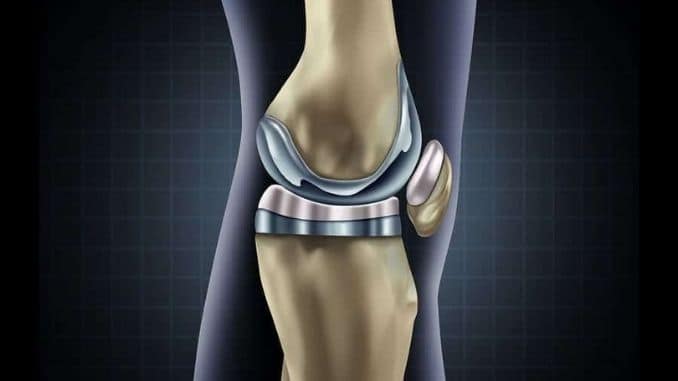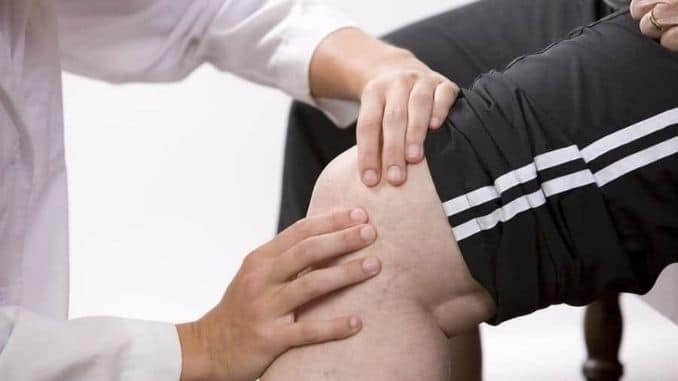
Osteoarthritis is the most common form of arthritis, and it affects more than 250 million people worldwide. This disorder can lead to severe pain and disability and, in some cases, the only chance of relief is total knee replacement surgery. Let’s take a look at the most important factors to consider when it comes to knee replacement.
Age-old Problem
Scientists have known about arthritis pretty much since the beginning of recorded history. How do we know this? Human fossil remains have shown changes consistent with osteoarthritis. The disorder is also more common in older adults. Approximately 50 percent of those who suffer from osteoarthritis are age 60 or over. At around age 50, your chances of developing arthritis begin to rise sharply. Interestingly, once you hit 70 to 79 years, your risk begins to go down.
What is a Total Knee Replacement?
Knee Replacement Benefits and Risks: A total knee replacement involves surgically replacing the old knee joint with an artificial joint made of metal and plastic components. During the operation, the lower end of the thigh bone (femur) is replaced with a metal shell. The upper end of the shin bone (tibia) is replaced with a molded piece of hard plastic and a metal stem. If your kneecap is also worn out, a plastic disk may be inserted behind the kneecap. Doctors call the entire set of components of the artificial knee a prosthesis.
The posterior cruciate ligament is a ligament in your knee that connects your femur and tibia for stability. In total knee replacement surgery, this ligament might be left alone, removed or replaced by a polyethylene post.
Why Do People Have Knee Replacements?
Knee Replacement Benefits and Risks: Not everybody who has arthritis requires knee replacement. In fact, the majority of people with arthritis do not end up having a knee replacement at all. Most cases of osteoarthritis are treated with other modalities, such as:
- Medications
- Physical therapy
- Injections
- Weight loss
- Braces
People who still have severe pain or disability, even with the above treatments, are candidates for total knee replacement. If you have difficulty walking, climbing stairs, getting out of chairs or pain at rest, then you might consider knee replacement surgery.
When people are deciding about knee replacement they also consider other factors, such as:
- Effect of pain on daily living
- Other diseases that might increase the risk of surgery (for example, diabetes, heart disease or emphysema)
- Age
What Are the Risks of Total Knee Replacement?
Knee Replacement Benefits and Risks: Like any surgery, total knee replacement carries some risks, such as:
- Infection
- Blood clots in the vein of the leg or lungs
- Heart attack
- Stroke
- Nerve damage
Signs of infection after surgery include knee drainage, swelling, redness, pain, fever, shaking and chills. Infection might also occur at a site not directly related to the operation, for example, urinary or lung infections. Also, like any other surgery there exists the risk of a hospital acquired infection which you are only exposed to while hospitalized.
Total Knee Replacement Preoperative Evaluation
Before you have surgery, it’s important for your physician to evaluate your hip and ankle first. Even though these joints won’t be involved in the operation, if you have problems with your hip and/or ankle, it might not be worth having the surgery. For instance, if you have severe hip and knee arthritis simultaneously, replacing your knee joint might not improve your quality of life.
You’ll also have a thorough preoperative evaluation of any preexisting medical conditions before surgery, including any medications you take. If you take aspirin or any blood thinners, you may be advised to stop taking these at some time before your surgery to avoid excess bleeding. Also, any medications that control diabetes needs to be adjusted as per your doctor’s instructions.
Some tests included in your preoperative evaluation might include:
- Electrocardiogram (EKG) to check for heart rhythm abnormality
- Liver, kidney and electrolyte measurements
- Blood count to make sure you don’t have anemia or signs of infection
- Urine analysis to check for urinary tract infection
- Chest X-ray to make sure you don’t have any lung disease or pneumonia
Do I Have to Lose Weight Before Knee Replacement Surgery?
Knee Replacement Benefits and Risks: In the past, doctors usually recommended weight loss prior to total knee replacement surgery. Some even had weight limits before the surgery would be completed. However, new evidence is challenging this practice.
Research out of the University of Massachusetts Medical School shows that weight loss might not be necessary before surgery. In fact, heavier patients may experience even greater symptom relief than those who are normal weight.
The study identified 2,964 patients who underwent total knee replacement and 2,040 who underwent total hip replacement for osteoarthritis between May 2011 and March 2013. The results showed that obese patients had a significant improvement in their symptoms. This study should be taken with a grain of salt because many other studies have shown that obesity increases the risk of complications from any surgery. Still, according to current research, telling people that knee replacement surgery won’t help pain symptoms in overweight persons is not true.
What’s Involved in Knee Replacement Surgery Recovery?
Depending on each case, the total surgery time is about 90 minutes to three hours total. The surgery is performed under total anesthesia and, afterward, you are taken to a recovery area. There, your vital signs are monitored until you recover enough to be taken to a regular hospital bed. You may have a urinary catheter placed to help allow for the flow of urine. Pain medication will be given to you as per your doctor’s instructions until your pain level decreases.
Getting up on your feet as soon as possible is a key factor for optimal recovery. This also helps avoid postoperative complications such as blood clots, intestinal problems or pneumonia. You likely will need a walker or crutches when you first begin walking, and physical therapy typically begins within 48 hours after surgery.
What About Rehabilitation After Discharge from the Hospital?
After you are discharged from the hospital, you’ll be given instructions about wound care and home exercises. It’s important to stay faithful to the home instructions to speed up your recovery and to avoid any complications. Exercise helps avoid scarring and contractures, and strengthening the muscles helps stabilize the replaced joint.
To make your home safer for when you arrive, you might consider the following:
- Prepare everything you’ll need on one floor to avoid stair use
- Install a safety handrail in your shower, or consider adding a shower stands or bench
- Get a sturdy chair with a firm seat cushion and back, and have a footstool or ottoman handy to elevate your leg
- Install an elevated toilet seat
- Remove throw rugs, clutter and obstacles from frequently traveled pathways
Besides home exercises, you’ll be scheduled to go to a rehabilitation center where a physical therapist can help you continue to regain knee function with exercises and other treatments. You’ll also need to see your surgeon as an outpatient to make sure your wound is healing properly.
Benefits of Total Knee Replacement
Having knee replacement surgery is not something to take lightly. In rare cases, the operation may not be effective at relieving symptoms. In other cases, you may need repeat surgery, but this is uncommon. Full recovery usually takes about six weeks or more.
The benefits of total knee replacement are reducing pain, increased range of motion, minimized pain at rest, ability to walk and climb stairs and an improved quality of life. Activities like running, skiing, basketball, soccer and high-intensity bicycling should be avoided. In the best case scenario, you should have improved use of your knee including the ability to dance, cycle, swim and play golf.
If you are looking for an exercise program to help you or your client recover from a knee replacement, check out the Knee Replacement Handbook, here!




